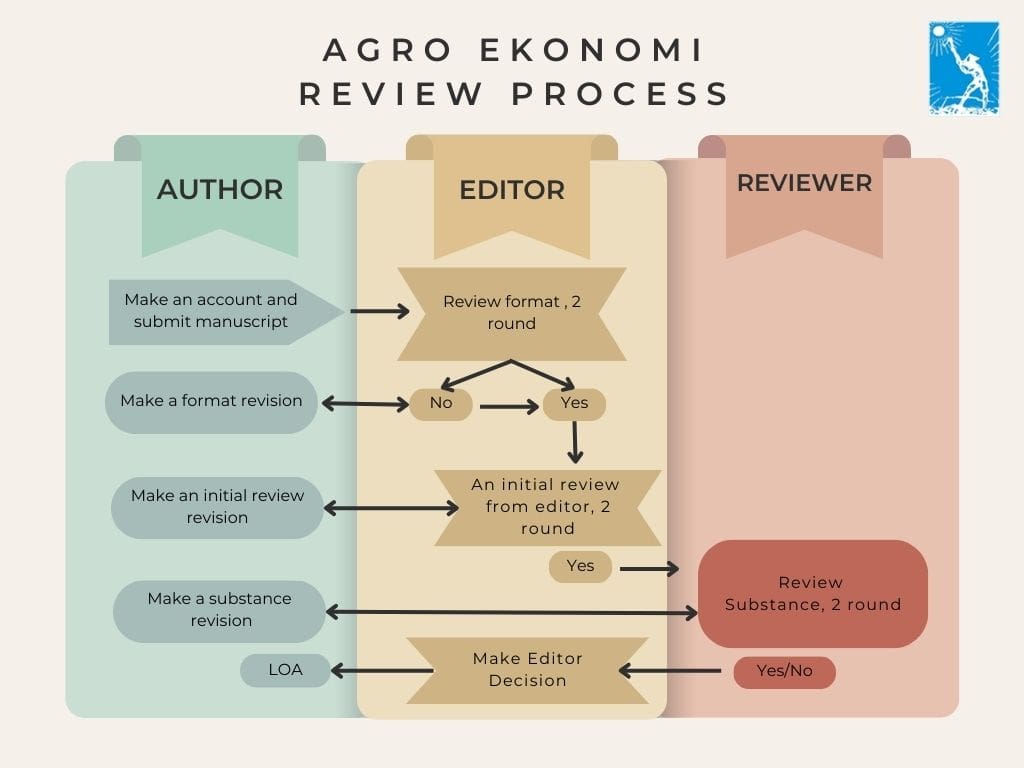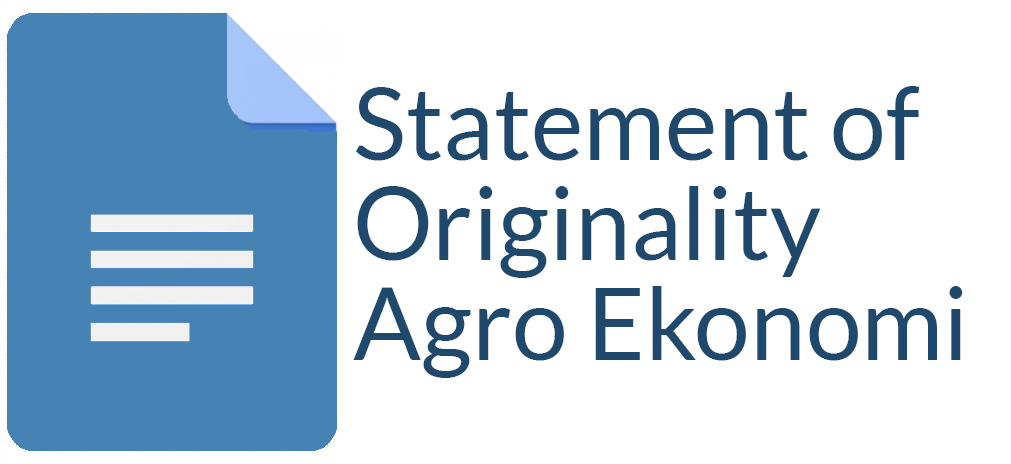Consumers’ Perception and Willingness to Pay for Cassava Leaves as a Leafy Vegetable in the Ejisu - Juaben Municipality, Ghana
Fred Nimoh(1), Stephen Prah(2*), Karen Boansi(3)
(1) Department of Agricultural Economics, Agribusiness and Extension Kwame Nkrumah University of Science and Technology - Kumasi
(2) Department of Agricultural Economics, Agribusiness and Extension Kwame Nkrumah University of Science and Technology - Kumasi
(3) Department of Agricultural Economics, Agribusiness and Extension Kwame Nkrumah University of Science and Technology - Kumasi
(*) Corresponding Author
Abstract
Cassava leaves, as a leafy vegetable and highly nutritious food, is not a common traded leafy vegetable on the local markets of Ghana. The study assessed consumers’ perception and their willingness to pay (WTP) for cassava leaves as a leafy vegetable in the Ejisu-Juaben Municipality, a peri-urban district in the Ashanti region of Ghana. A multistage sampling technique was used to select 200 respondents for the study. Based on the empirical results, 67% of respondents were willing to pay for cassava leaves at various bids. Overall agreeing perception index (PI) was 64.6%, implying that respondents accept the cassava leaves to be sold at the local market as a leafy vegetable. On average, for every 500 grams bunch of cassava leaves, respondents were willing to pay GHS1.61 (USD0.32), below the value of its close substitute, spinach, at an initial bid of GHS2.00. An empirical tobit regression model revealed that consumers’ monthly income, level of education, and perception to sell cassava leaves as a leafy vegetable have significant influence on their WTP for cassava leaves as a leafy vegetable. The study recommends the need for farmers and other stakeholders to develop and promote the market for cassava leaves, as an alternative source of leafy vegetable for consumers and also as source of income to farmers. There is also the need for sensitization on the nutritional benefits and training on value addition to the produce to boost its patronage in the country and globally.
Keywords
Full Text:
PDFReferences
Ahmed, I., Lockhart, P.J., Agoo, E.M., Naing, K.W., Nguyen, D.V., Medhi, D.K. & Matthews, P.J. (2020). Evolutionary origin of taro (Colocasia esculenta) in Southeast Asia. Ecol. Evol. 10, 1–14.
Asare, G. O. & Twumasi, I. (2016). Assessing consumers’ perception and willingness to consume Cassava leaves as a leafy vegetable in the Kumasi Metropolis, Ghana. A Thesis submitted to the Department of Agricultural Economics, Agribusiness and Extension-KNUST.
Alvensleben, V. R. & Meier, T. h. (1990). The influence of origin and variety on consumer perception. Some psychological factors causing perception distortions. Acta Horticulturae 259: 151- 162.
Baral, N., Stern, M. J. & Bhattarai, R. (2008). Contingent valuation of ecotourism in Annapurna conservation area, Nepal: Implications for sustainable park finance and local development. Ecological Economics, 66(2-3), 218–227. doi:10.1016/j. ecolecon.2008.02.004
Bhandari, A. K. & Heshmati, A. (2010). Willingness to Pay for Biodiversity Conservation. Journal of Travel and Tourism Marketing, 27(6), 612–623. doi:10.1080/10548408.201 0.507156.
Dickson, P. I. (2013). Assessment of consumer acceptance and willingness to pay for induced quality attributes in processed cassava leaves Products in morogoro municipality. A dissertation submitted in partial fulfilment of the requirements for the degree of Master of Science in agricultural economics of Sokoine University of Agriculture. Morogoro, Tanzania.
Du Toit, L. & Crafford, S. (2003). Beliefs and Purchasing Practices of Cape Town Consumers Regarding Organically Produced Food. Journal of Family Ecology and Consumer Sciences. 31:1–11.
Elfhag, K., Tholin, S. & Rasmussen, F. (2008). Consumption of fruit, vegetables, sweets and soft drinks are associated with psychological dimensions of eating behaviour in parents and their 12-year-old children. Public Health Nutrition, 11(9), 914–923. doi:10.1017/S1368980008002371
Fasuyi, A.O. (2005). Nutrient composition and processing effects on cassava leaf (Manihot esculenta, Crantz) antinutrients. Pakistan Journal of Nutrition, - Citeseer.
FAOSTAT (2014). Food and Agriculture Organization of the United Nations. http://faostat.fao.org/site/567/default.aspx#ancor.
Freeman, K. B. (2011) "Human needs and utility maximization", International Journal of Social Economics, Vol. 38 Issue: 3, pp.224-236, doi: 10.1108/03068291111105174.
Ghana Health Service, (2014). Family Health Division Annual report.
Kimenju, S. C. & Hugo, D. G. (2005). Consumer’s willingness to pay for genetically modified foods in Kenya. In: 11th International Congress of the European Association of Agricultural Economists, the Future of Rural Europe in the Global Agri-Food System, Copenhagen, Denmark, 24 – 27 August 2005. 16pp.
Lebot, V. & Legendre, L. (2015). HPTLC screening of taro hybrids (Colocasia esculenta (L.) Schott) with high flavonoids and antioxidants contents. Plant Breed. 134, 129–134.
Mamat, M. P., Yacob, M. R., Radam, A., Noor, a. G. A., Ghani, A. & Fui, H. (2013). Willingness to pay for protecting natural environments in Pulau Redang Marine Park, Malaysia, 7(25), 2420–2426. doi:10.5897/AJBM10.752.
Ministry of Economic and Industry (MEI). (2020). Agriculture Sector in Ghana Review. Foreign Trade Administration, Accra, Ghana. (Acessed on May, 2021) (Retrieved from: http//www.itrade.gov.il).
Moreno-Sanchez, R.; Maldonado, J.H., Wunder, S. & Borda-Almanza, C. (2012). Heterogeneous users and willingness to pay in an ongoing payment for watershed protection initiative in the Colombian Andes. Ecol. Econ. 75, 126–134.
Nimoh, F., Asare, O. G., Twumasi, I. & Anaman, R. (2018). Consumers’ Willingness to Consume Cassava Leaves as a Leafy Vegetable in the Kumasi Metropolis, Ghana. International Journal of Food Studies, pages 38–50. DOI:10.7455/ijfs/7.2. 2018.a4.
Nkoom, W.O. (2011). Identifying Ghanaian Cassava leaves with safe Cyanide levels for use as vegetable. Master’s Thesis, Medical Science.pp 2.
Nweke, F.I. (2004). New Challenges in the Cassava transformation in Nigeria and Ghana. Discussing Paper No. 118. Environment and production technology Division, International Food Policy Research Institute, Washington DC, USA.
Padberg, D. I., Ritson, C. & Albisu, F. (2002). Agro – Food Marketing. CABI Publishing, UK. Pp 209– 224.
Quaye, W. K., Agyeman, A. K.O. & Nimoh, F. (2010). Socioeconomic survey of traditional commercial production of cocoyam and cocoyam leaf. Department of Agricultural Economics, Agribusiness and Extension, KNUST, Ghana. Rural Outreach Program. tspace.library.utoronto.ca
Ragaert, P., Verbeke, W., Devlieghere, F., & Debevere, J. (2004). Consumer perception and choice of minimally processed vegetables and packaged fruits. Food Quality and Preference, 15(3), 259–270. doi:10.1016/ S0950-3293(03)00066-1.
Reichstädter, M. (2020). Application of Diffusive Gradients in Thin Films Technique in Food- and Environmental Analysis. Ph.D. Thesis, Brno University of Technology Faculty of Chemistry, Institute of Food Science and Biotechnology, Brno, Czech Republic.
Rosenberger, R. S., Needham, M. D., Morzillo, A. T. & Moehrke, C. (2012). Attitudes, willingness to pay, and stated values for recreation use fees at an urban proximate forest. Journal of Forest Economics, 18, 271–281. doi:10.1016/j.jfe.2012.06.003.
Togridou, A., Hovardas, T. & Pantis, J. D. (2006). Determinants of visitors’ willingness to pay for the National Marine Park of Zakynthos, Greece. Ecological Economics, 60, 308–319. doi: 10.1016/j.eco
Wanapat, M., Puramongkon, T., & Siphuak, W. (2000). Feeding of cassava hay for lactating dairy cows. Asian-australasian Journal of Animal Sciences, 13(4), 478–482. doi:10. 5713/ajas.2000.478.
Watson, V. & Ryan, M. (2006). Exploring
preference anomalies in double bounded contingent valuation. Health Economics, 67(1), 13-18
Article Metrics
Refbacks
- There are currently no refbacks.
Copyright (c) 2018 Agro Ekonomi

This work is licensed under a Creative Commons Attribution-ShareAlike 4.0 International License.
View My Stats











